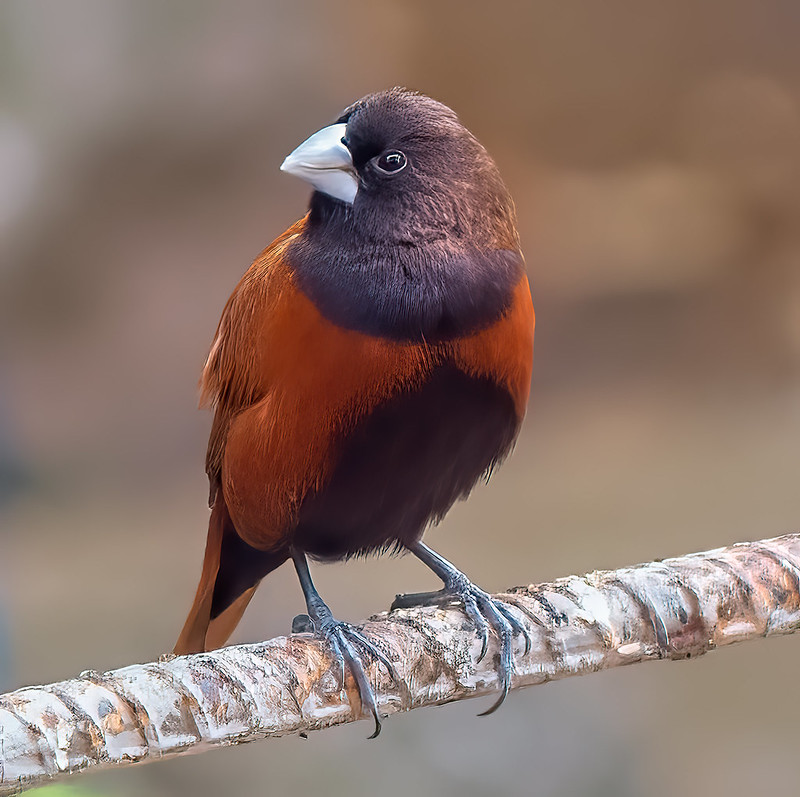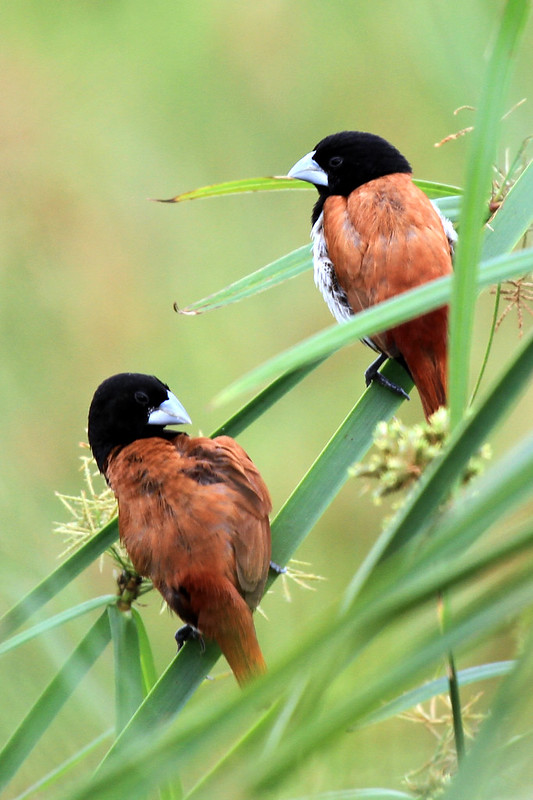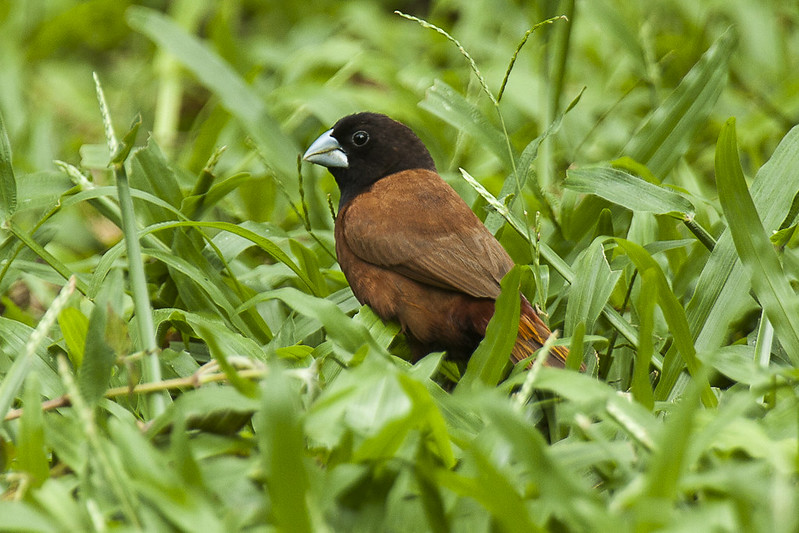Subtle Combinations Of Rufous Red And Midnight Black Contrast Beautifully On A Thoroughly Gregarious Bird – Meet The Chestnut Nunia!

A small gregarious bird that is covered in beautifully contrasting colors of rufous red and jet black.
Meet the Chestnut Nunia

The chestnut munia or black-headed munia (Lonchura atricapilla), is a small passerine bird. A mere 11 – 13 cm in length adult plumage on these birds is mostly rufous red to a lovely shade of chestnut brown, except for their heads which are black, finished off with a stubby pale grey beak. Some species do also have a black abdomen.

The female of this species looks very similar to the male, however, only he has a singing voice.
Related Reading:
Juveniles are pale brown above, lacking the black head that the adults have.

This species of finch is resident in Bangladesh, Brunei, Cambodia, and China, as well as many other parts of Southeast Asia. It has also been successfully introduced to the Greater Antilles and Martinique.

The Chestnut munia is a bird that likes to frequent open grassland as well as cultivated areas looking for food.

This species like to dine on grain and any other suitable seeds it may come across.

Breeding for this species occurs at different times of the year depending on their range. In Malaysia for instance it is from December to October when a dome-shaped nest made from grass is placed in a suitable bush. Four to five eggs are laid within and incubated by both the male and the female for 12 to 15 days.

Due to this species extremely large range, and relatively stable population, this species does not approach the thresholds for Vulnerable under the size criterion set by the IUCN.

Watch this bird right here in the video below:
H/T Wikipedia – Creative Commons Attribution-ShareAlike License.
Hey, Up There 26 – Our Top Photos Up To The Week Ending 05/26/2021!
Please SHARE this video with all your bird-loving friends and family.






